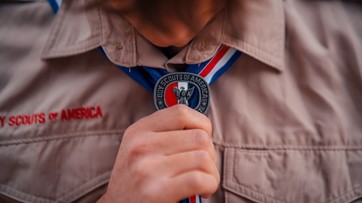From the moment a Scout takes their first step, it’s not about age or grade—it’s about demonstrating skills and knowledge. The path to the esteemed Eagle rank is marked by rigorous standards, typically taking Scouts four to six years to achieve. This journey is a testament to dedication, perseverance, and the pursuit of excellence. However, Matthew Blaisdell notes that there is a much more efficient way to reach the summit.
Individuals must go through two phases of advancement. The first sees them go from a Scout to a First Class Scout, advancing by working as a team, being self-reliant, and learning the Scoutcraft skills. During the second, people move from Star Scout to Eagle Scout, climbing the ladder as they develop leadership abilities, serve the community, and earn merit badges.
Understanding the Ranks
Those who’ve been there, done that, and got the badges note that understanding the ranks helps Scouts move forward as quickly as possible by pointing out which areas they should focus on. Said ranks are as follows:
- Scout is earned by demonstrating basic Scouting ideals and a few common knots.
- Tenderfoot is earned by spending a night in a self-pitched tent, the beginnings of first aid, preparing camp meals, and learning to care for camp tools.
- Second Class is earned through community service and financial skills, alongside building campfires, using a compass and map, identifying plans/animals, and developing water rescue/swimming skills.
- First Class is earned by learning about weather, using GPS systems, kayaking, learning about civic concerns, and showing advanced rescue/first aid techniques.
- Star is achieved when a First Class Scout has served in their position for at least four months, earned six merit badges, and completed a minimum of six community service hours.
- Life is awarded when a Star Scout has served for at least six months, earned an additional five merit badges, and done at least six community service hours.
- Eagle is the highest rank. It’s rewarded upon earning 21 merit badges, and demonstrating Scout Spirit, leadership, and service. To do this, Life Scouts must plan, organize, manage, and lead an extensive service project.
Tips for Advancing Efficiently Through Scouting Ranks
Beyond understanding the ranks and their requirements, experts suggest following the below advice to climb the Scout ladder:

Take Advantage of Advancement Opportunities
Attending troop events increases the likelihood of getting requirements signed off. However, they weren’t all created equally — some are better for advancement than others.
According to the brilliant brain at ScoutSmarts, the best advancement events are:
- Summer/winter camps
- Merit badge seminars
- Hikes
- Scoutmaster meetings
- Break times during outings
- Before/after troop meetings
- Regular troop campouts
Ask Older Scouts
Most older scouts are happy to help younger members advance by ensuring they understand the skill and coaching them through requirements. Asking them for a small favor to begin with before asking them to be a full-on Scouting coach is the best method.
Know Scouting Resources
Earning merit badges is the most time-consuming part of the advancement, causing many to spend hundreds of hours on the various requirements. However, by identifying the resources available, Scouts can climb the rank much faster. In this case, resources are Scoutmasters, older, Scouts, merit badge guidebooks, and The Boy Scout Handbook.
